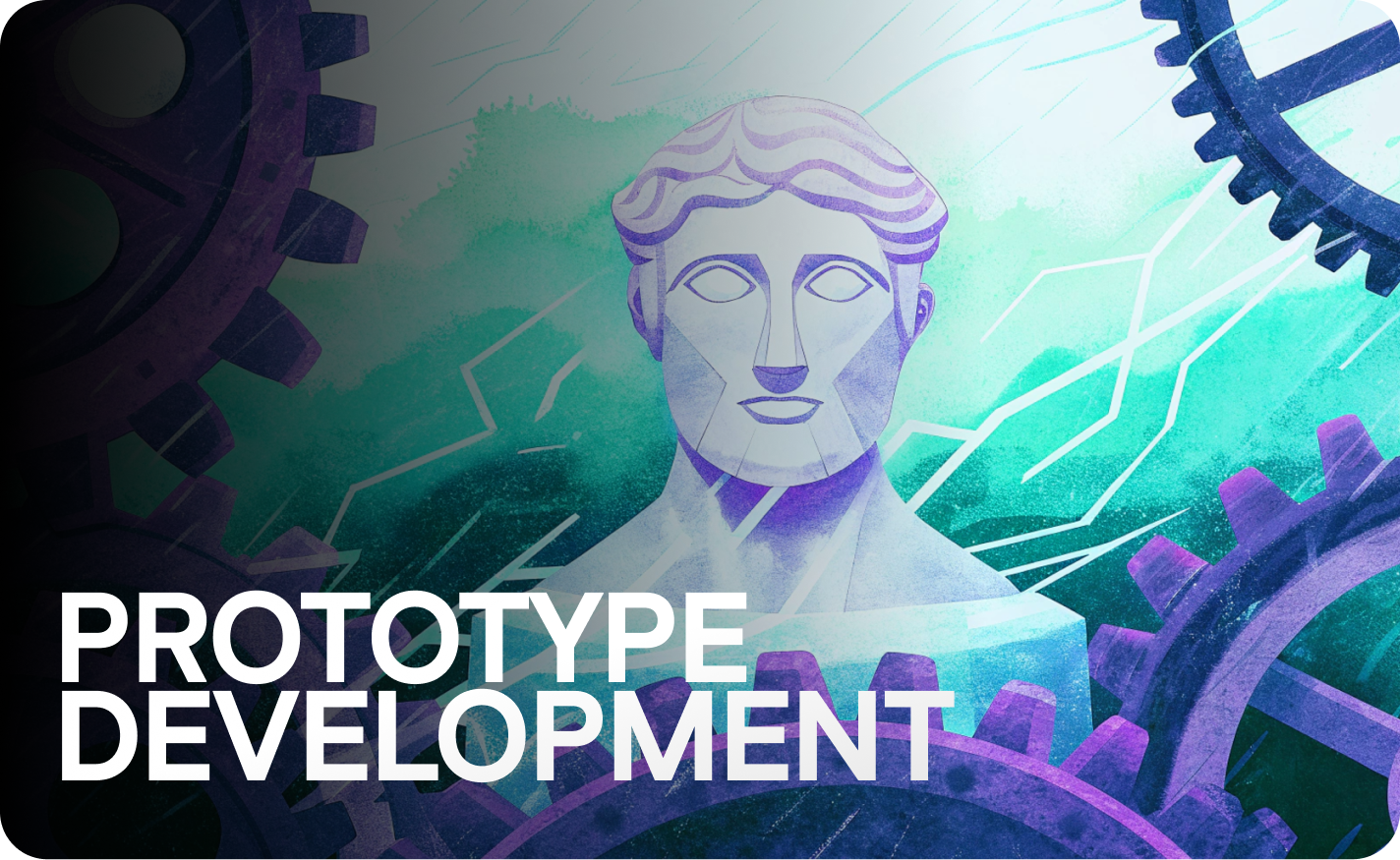Rapid Prototype Development Mastery for Product Development Teams

Modern prototype development has evolved beyond isolated design iterations. As organizations move beyond simply "doing Agile", development teams face compressed timelines and heightened validation demands. The intersection of prototyping and Agile methodologies creates acceleration opportunities that reduce cycle times while maintaining product integrity.
Accelerated validation gates
Agile uses short iterative cycles, and prototyping shares similarities with Agile in that it uses prototypes to gather feedback quickly. This convergence means development teams can compress validation loops without sacrificing stakeholder input or user testing rigor.
Real-time handoff synchronization
Development velocity improves when prototype artifacts integrate directly into workflow systems. Teams embedding session replay slots in documentation platforms report 30% faster handoffs, enabling product teams to maintain adaptability throughout the development lifecycle.
Prototype Development Process Evolution

Iterative cycles replace waterfall constraints
Traditional prototype development followed sequential gates. In 2025, SDLC increasingly embraces Agile and DevOps principles as development cycles shorten. The 6 Stages of Agile Development Lifecycle—Concept, Inception, Iteration, Release, Maintenance, Retirement—now directly inform the prototyping process.
Compressed feedback integration
The shift impacts how product teams validate concepts. Software prototyping cycles allow teams to gather feedback quickly, cultivating innovation through rapid iteration. This velocity transforms the traditional product development process.
Type of Prototype for Agile Workflows
Selecting prototype fidelity
Different stages of prototyping demand different prototype approaches. Paper prototypes serve concept validation, while high-fidelity prototypes test usability and user experience before production. The type of prototype selected must align with specific development stage objectives.
Functional validation requirements
Product prototype specifications vary based on testing objectives. A functional prototype tests core mechanics, while a working prototype validates end-to-end workflows. Engineering teams should match prototype design to the questions they need answered.
Physical versus digital considerations
Hardware development requires physical prototype builds. Technologies like 3D print, CNC machining, and additive manufacturing enable rapid prototype creation. Software development leans toward interactive prototypes and prototyping tools like wireframe platforms that connect directly to deployment pipelines.
Stages of Prototyping Within Sprint Cycles

Initial concept exploration
The first prototype emerges from product idea validation. Development teams create a prototype that captures core functionality without over-engineering. This initial prototype serves as a proof of concept that stakeholder groups evaluate for feasibility.
Iterative refinement loops
Each iteration advances prototype fidelity. Product designers gather user feedback, then test and refine features based on actual usage patterns. Agile methods support quick creation of prototypes and encourage regular testing to speed up development.
Pre-production validation
Later stages of development focus on manufacturing process integration. For hardware, this might involve injection molding trials or mass production readiness. For software, it means ensuring the prototype is ready for deployment architecture.
Best Practices for Prototype-Driven Agile

Embed validation into sprints
Modern Agile practices turn prototypes into powerful, scalable products in 2025 trends. Development teams should schedule prototype reviews within sprint cadences, not as separate validation gates that interrupt flow.
Maintain lightweight documentation
Prototypes help communicate product vision faster than specification documents. The development team benefits when prototype artifacts become living documentation that evolves through each iteration. Avoid heavy process overhead that slows the iterative process.
Leverage continuous integration
Top 10 agile best practices for 2025 include CI/CD and TDD for actionable tips. Prototyping techniques should integrate with automated testing pipelines, enabling rapid deployment of new prototype versions for stakeholder evaluation.
Balance speed with learning
Rapid prototype cycles produce velocity, but teams must ensure the prototype captures meaningful validation data. Usability testing and testing and refinement cycles generate the insights that prevent costly later development pivots.
Product Development Company Approaches

Structured phase gates
Product development companies implementing phased validation reduce iteration cycles by 25% through integrated market audits and sketch iterations. These gates prevent prototype development process waste by validating assumptions before committing resources.
Cross-functional integration
Successful product delivery requires alignment between product teams, design and engineering groups, and business stakeholders. Prototypes allow these groups to align on product vision early, reducing development costs tied to miscommunication.
Scalable prototyping services
External prototyping services accelerate capability when internal teams lack specialized skills. CNC machining partners, injection molding vendors, or 3D print bureaus extend capacity without permanent headcount. Software teams similarly leverage prototyping tools and UI platforms to accelerate concept validation.
Rapid Prototype Acceleration with Product Analytics
Embed real-time validation
Product analytics transform how teams validate prototype assumptions. By embedding session replay capabilities directly into prototype environments, product teams capture behavioral data that reveals usability issues before they reach production.
Accelerate KPI calibration
User session data accelerates KPI tuning by approximately 20%, enabling development teams to refine metrics based on actual user behavior rather than assumptions. This data-driven approach ensures the final product meets validated performance thresholds.
Pre-validate transition points
Prototypes are used to test critical user flows before engineering commitment. Session replay analysis reveals friction points in these flows, allowing product designers to refine navigation and interaction patterns while development costs remain low.
Prototypes Help Bridge Design and Development

Shared artifact alignment
The process of creating prototypes generates artifacts that both designers and developers reference. When prototypes serve as specification documents, teams reduce translation errors between design intent and technical implementation.
Continuous feasibility validation
Engineering teams evaluate whether the product will look and function as designed throughout the development lifecycle. Prototypes for testing enable early discovery of technical constraints, preventing late-stage redesigns.
Stakeholder communication efficiency
A product prototype communicates vision more effectively than written specifications. Stakeholders viewing an interactive prototype grasp product direction faster, reducing approval cycles and alignment meetings.
Prototyping Model Integration
Hybrid Agile-Prototyping fusion
Draw from frameworks that link wireframes to deployment, sidestepping overload in iterative builds. The prototyping model adopted should compress validation time while maintaining quality gates that ensure the prototype captures essential requirements.
Parallel track execution
Advanced product teams run prototype validation in parallel with architecture planning. As prototypes are tested with users, engineering teams prepare scalable infrastructure. This parallelization reduces overall time to market for the new product.
Feedback loop acceleration
Prototype based development succeeds when feedback reaches teams within hours, not weeks. Real-time analytics shorten this loop by capturing usability insights as they occur, enabling immediate refinement rather than waiting for formal testing phases.
Validate User Experience Through Session Intelligence
Capture authentic interaction patterns
Traditional usability testing occurs in artificial environments. Embedding analytics into prototypes captures how users naturally interact with the product or system in realistic scenarios, revealing insights that lab testing misses.
Identify friction before production
Session replay shows exactly where users struggle with prototype interfaces. Product designers watch replays to understand why users abandon flows or repeatedly attempt failed interactions, then refine design elements based on observed behavior.
Measure engagement metrics early
The product development process benefits when teams validate engagement assumptions during prototyping phases. Analytics reveal which features generate interest and which get ignored, informing scope prioritization before production engineering begins.
Refine Prototypes with Data-Driven Iteration
Quantify validation cycles
Each iteration should produce measurable improvements. By tracking metrics like task completion rates, error frequencies, and time-on-task across prototype versions, development teams quantify progress rather than relying on subjective assessment.
Prioritize refinement opportunities
Not all prototype feedback deserves equal attention. Session data helps product teams prioritize which issues impact user experience most significantly, focusing refinement efforts where they deliver maximum value.
Accelerate consensus building
When stakeholders disagree on design direction, session replay evidence resolves debates objectively. Watching users struggle with a proposed feature builds consensus faster than abstract discussions about usability trade-offs.
Prototyping Tools for Modern Development Stacks
Component library integration
Modern prototyping tools connect directly to component libraries, enabling designers to build with the same elements developers will implement. This alignment reduces translation work and ensures the prototype accurately represents the end product.
API simulation capabilities
Functional prototypes require simulated backend responses. Tools like API mocking platforms let teams test realistic data flows before backend services exist, validating user flows against near-production data structures.
Collaboration platform connectivity
Effective prototype workflows embed prototype artifacts directly into team collaboration platforms. When prototype links live alongside tickets and documentation, the entire development team maintains context without tool-switching overhead.
Product Design Velocity with LiveSession
Accelerate prototype-to-production transitions
LiveSession embeds directly into prototype environments, capturing user interaction data from the earliest validation cycles. Development teams using session replay reduce handoff time by identifying and resolving usability issues before engineering sprints begin.
Real-time feasibility validation
Session replay provides immediate visibility into how users interact with prototype interfaces. Product teams watch replays to validate that the product meets intended use cases, catching misalignment early when corrections remain inexpensive.
Quantified iteration impact
Each prototype refinement produces measurable user behavior changes. LiveSession analytics track metrics across prototype versions, demonstrating which iterations improve user experience and which fail to move key performance indicators.
Stakeholder evidence generation
Replays transform stakeholder reviews from opinion-based discussions into evidence-based decision processes. Product managers share session replays showing real users encountering specific issues, building consensus around prioritization decisions.
Development Process Optimization Through Analytics

Compress validation timelines
Integrating analytics into the prototyping phase eliminates separate testing cycles. As users interact with prototypes, teams gather validation data continuously rather than scheduling discrete testing windows that elongate timelines.
Reduce development costs through early detection
Issues discovered during prototyping cost a fraction of production bugs to resolve. Session replay helps product teams identify problems when prototype needs remain flexible, avoiding expensive post-launch fixes.
Enable distributed testing
Cloud-based analytics eliminate geographic testing constraints. Product teams validate prototypes with users across markets simultaneously, gathering diverse feedback that improves product relevance without travel overhead.
New Product Launch Preparation
Pre-production user validation
Before committing to mass production or software deployment, teams should validate that the future product solves target user problems. Prototype testing with real users, enhanced by session analytics, provides confidence that the product idea translates into successful product delivery.
Manufacturing process alignment
For hardware products, prototypes validate not just design but manufacturability. Early prototypes built with similar materials and processes to the planned manufacturing process reveal production constraints before tooling investment.
Go-to-market readiness assessment
Later development stages include marketing and support preparation. Watching how users interact with prototypes informs documentation needs, training priorities, and support FAQ development, compressing post-launch ramp time.
Build Your Optimized Prototype Scaffold Today
Deploy cycles without drag
Modern prototype development demands velocity without sacrificing validation rigor. Teams that embed analytics into prototyping workflows accelerate feedback loops while maintaining user-centric development practices.
Transform validation efficiency
The convergence of Agile methodologies and prototype-driven development creates opportunities for dramatic cycle compression. Organizations adopting these integrated approaches reduce time-to-market while improving product-market fit through continuous validation.
Start capturing prototype insights now
Don't wait until production to understand how users interact with your product. Embed session replay into your prototype environments today and start gathering the behavioral intelligence that transforms prototypes into validated product specifications.
Start your free LiveSession trial and accelerate your prototype validation cycles. Capture user interactions, identify friction points, and refine your prototypes with data-driven confidence. Deploy your next prototype with embedded analytics and watch validation velocity transform your development process—sign up in 60 seconds and experience the difference real-time user intelligence makes in prototype refinement.
Related articles
Get Started for Free
Join thousands of product people, building products with a sleek combination of qualitative and quantitative data.




